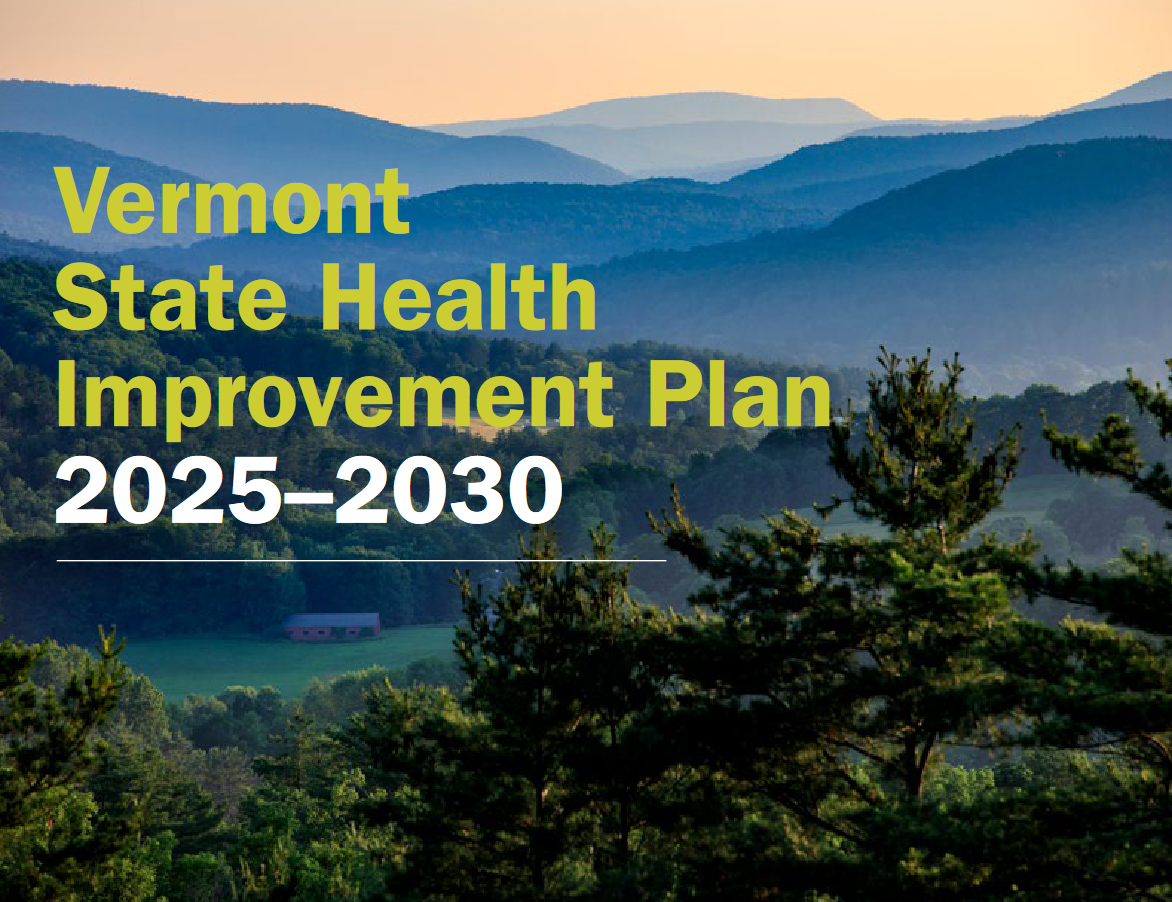The Health of People in Vermont
What do we know?
The Vermont State Health Assessment is an overview of what we know about the health of people in Vermont at a point in time. It uses data to understand health outcomes and differences across groups. The Assessment is conducted every five years.
What are we going to do about it?
Results of the State Health Assessment are used to develop the State Health Improvement Plan. The Plan is a five-year roadmap for ensuring that all people and communities in Vermont have access to opportunities for health and well-being. It reflects the shared efforts of people and organizations across the state. It outlines what we want to achieve, how we will achieve it, and how we will know if we are making a difference.
2025-2030 State Health Improvement Plan
Read the plan.
Learn more about how we will address the following health goals:
- Improve the availability of affordable, accessible, and safe housing.
- Improve health and quality of life by addressing the impact of the high cost of living.
- Increase access to inclusive, equitable, and affordable health care services.
- Strengthen the capacity of the mental health and substance use services system to support individuals and communities.
A scorecard shows progress towards achieving our goals.

